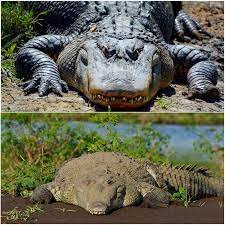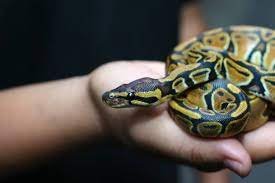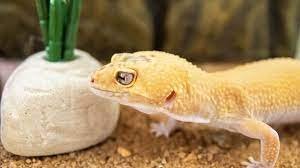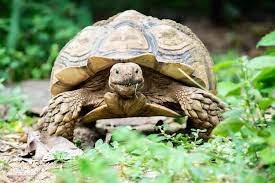Russian tortoises are 5-10″ long terrestrial reptiles with a somewhat flattened, oval shell, enlarged scales on the tail and thighs, four toes on each forefoot, and a clawlike spur on the end of the tail. Coloring is generally olive or yellow-brown with a dark blotch on each scute. Males are typically smaller than females.
Russian tortoises are native to central Asia, where they can be found in Kazakhstan, Uzbekistan, Turkmenistan, Kyrgyzstan, Afghanistan, and the northeastern edge of Iran. They have adapted to a range of habitats, but their preferred habitat is a dry steppe/rocky desert with sandy soil and sparse vegetation. They are most likely to be found near sources of water where vegetation is relatively abundant.
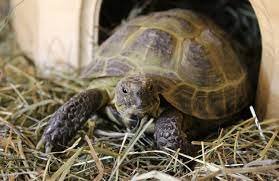
The Russian tortoise has many alternative names, including Afghan tortoise, Horsfield’s tortoise, Central Asian tortoise, four-clawed tortoise, four-toed tortoise, and steppe tortoise.
If you pay attention to providing excellent Russian tortoise care, your pet is likely to live up to 50 years, or possibly more. Although this species is fairly hardy, their lifespan and care requirements make them a fairly high-commitment pet.
Lifespan
The typical Russian tortoise’s lifespan can exceed 40 years when healthy. Like many other tortoise species, these reptiles have a long life expectancy.
To reach that milestone, these reptiles need optimal care. Without the right environment, a high-quality diet, and overall superior husbandry, these tortoises can experience stress and disease that shortens their lifespan.
Appearance & Colors
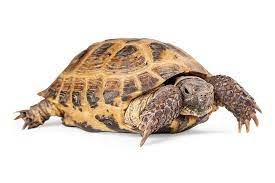
Russian tortoises are beautiful reptiles with all the hallmark features you’d expect from a land-roving tortoise. This includes the large domed shell, rough skin, and thick stubby legs.
The carapace, which is the upper part of the shell, is usually covered in shades of olive green, tan, brown, and black. The ridges are often tan while the centers of the individual scutes are darker in color.
The bottom of the shell, called the plastron, is dark as well. It may be solid black or have splashes of brown thrown in.
The skin of the tortoise is tan. You will also notice that the tortoises have darker patches all over the lower legs and head. They create an armor-like look and are usually a bit harder in texture.
Characteristics

Russians Tortoises can make a great addition to your house or backyard. When keeping your Russian outdoors make sure you have plenty of shade and soil available for burrowing. Russians are excellent diggers. Russians will dig burrows to keep warm in cooler weather as well as to hibernate during the winter months. Their small size and active nature make these tortoises an excellent reptile pet.
Also, know about the Top 17 Most Popular Pet Frogs For Beginners
Building habitat
Keep the habitat arid and dry, with shaded areas for your tortoise to escape direct sunlight or their basking lamp. Humid climates may need a dehumidifier, and cool climates require supplemental heating.
- Substrate: Tortoises are known for eating substrate, so bedding should be digestible, such as alfalfa pellets, hay, or commercially available paper-based bedding; the substrate should be deep enough for the tortoise to burrow. Don’t use coarse, particulate substrates that can be ingested and cause gastrointestinal tract obstruction, such as sand or gravel
- Décor: Provide a shaded area, such as a cave or hideout filled with additional substrate, where your tortoise can hide when it gets too warm or cold, plus several large flat rocks for climbing
- Temperature: Provide a temperature gradient (95–100°F for the warm end and 70°F for the cool end); use an incandescent light or ceramic heater as a primary heat source. While tortoises live outside in nature at temperatures lower than 70°F, they will often hibernate in cooler climates, slowing their metabolism and digestion. Their immune system function is suppressed at lower temperatures, making them potentially more susceptible to infection; ideally, temperatures should be kept constant (and not lower than approximately 70°F) for tortoises housed indoors so they do not get sick
- Humidity: Maintain less than 60% humidity; high humidity can contribute to respiratory tract infections. A humid hideout (with moist sphagnum moss placed either in a commercially available plastic enclosure or an upside-down, plastic sweater box with a cutout for a door) is essential to help prevent growing juvenile tortoises from developing “pyramiding” of their shells. With this condition, inadequate humidity causes keratin plates (the scutes) on the carapace to be retained as they grow, rather than to shed appropriately; damp, moist substrate must be changed frequently to prevent mold from developing
- Lighting: Providing UVB lighting for 12–14 hours a day helps ensure tortoises produce adequate vitamin D in their skin to absorb dietary calcium; change UV lights every six months to enable adequate UV exposure
- Water: Provide constant access to a shallow water dish large enough for tortoises to soak in and drink from; tortoises should be able to easily enter and exit water bowls, making ramp bowls an ideal choice. Fresh water should be provided daily, as tortoises often defecate in water bowls when they are soaking
Behavior & Temperament
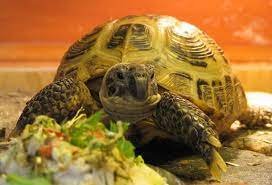
Russian tortoises are very active creatures. They will spend most of their days grazing on grass and plants. When they’re not doing that, you will likely find them burrowing in the dirt. The tortoises burrow to get away from the heat and create shelter. Some tortoises will also burrow to hibernate. This often occurs during the winter. The tortoise’s metabolism will slow down as they spend most of their time under the surface of the ground. They may come out every once in a while when the temperatures warm up, but most of their time will be spent sleeping.
Diet
The Russian tortoise’s natural diet consists of herbaceous and succulent vegetation including grasses, twigs, flowers, and some fruits. These tortoises DO NOT EAT ANIMAL PROTEIN! The best diet is one that comes as close as possible to their natural diet, which is high fiber, low protein, and calcium-rich.
You have a lot of options when it comes to the diet and food you give to your Russian tortoise! These reptiles are herbivores and will happily eat many plant-based foods and leafy greens. Avoid meat-based foods and fruits. Both of those items can cause stomach problems. You should also steer clear of grains and nutrient-deficient food items, such as iceberg lettuce.
Here are some good foods that can keep Russian tortoises healthy:
- Romaine lettuce
- Alfalfa hay
- Collard greens
- Dandelion greens
- Prickly pear cactus
- Corn
- Chard
- Green or red-leaf lettuces
- Squash
- Turnip greens
- Broccoli
- Parsley
- Endive
- Spinach
- Sweet potato
- Carrots
Using several vegetables is ideal in a Russian tortoise diet. Mix things up to provide as many vitamins and nutrients as possible. Once a week, dust a little bit of calcium and vitamin D3 supplements into the food. This step is very important for tortoises that live inside and don’t have continued exposure to the sun.
Russian Tortoise Life

Russian Tortoises are hardy reptiles and typically will live for over 40 years in captivity. They can live a long and healthy life provided you follow a consistent husbandry routine, and proper care, and give them a suitable enclosure.
Russian tortoises are susceptible to many of the same health issues as other reptiles kept in captivity that is caused by improper enclosures, unsanitary habitats, or a lack of nutrients.
- Respiratory infections are seen in captive tortoises, especially those kept in an indoor enclosure with poor ventilation or incorrect temperatures. These infections can be caused by a variety of organisms including bacteria, fungi, viruses, and parasites.
- Gastrointestinal parasitic infections are also common in Russian Tortoises. These infections are normally caused by unsanitary living conditions, expired food, or exposure to another ill pet. Antiparasitic can be prescribed by your veterinarian to treat these infections.
- Metabolic bone disease is another health concern if your tortoises don’t get a proper diet or enough exposure to specific light waves. Calcium, phosphorous, and vitamin D are required by a number of different body systems for normal everyday function and are especially important to bone and shell strength.
If you suspect any of these health conditions, consult your veterinarian as many infections can be zoonotic and transferred to people.
Signs They Are Healthy
- A smooth and uniform upper shell free of irregularities.
- Active and exhibiting normal behaviors such as soaking and basking.
- A healthy and consistent appetite.
- Urates that are white and semi-liquid in form.
Sickness Symptoms
- Skin irregularities including bleeding from their shell.
- Weight loss, listlessness, lethargy, or an inability to walk.
- Discharge from the mouth, nose, or eyes.
- Difficulty breathing or wheezing.
Summary
Russian Tortoises make excellent pets for just about anyone from first-time reptile owners to experienced enthusiasts. This species is one of the most popular breeds because of its hardy nature, fun personality, small size, and low husbandry requirements.
When purchasing this breed you should consider their long lifespan and expect them to live for more than four decades. If this is too long, then consider the Indian Star Tortoise. They are similar-sized and also make great pets. If you’re looking for a lifelong friend then the Russian Tortoise is the pet for you.


